Moderate overlap front: original test
Rating applies to 2011-15 models
Tested vehicle: 2011 Mercedes-Benz GLK 350 4-door 4wd
The Mercedes-Benz GLK was introduced in the 2010 model year. Beginning with 2011 models, a driver knee airbag was added to improve occupant protection in frontal crashes.
| Evaluation criteria | Rating |
|---|---|
| Overall evaluation | |
| Structure and safety cage | |
| Driver injury measures | |
| Head/neck | |
| Chest | |
| Leg/foot, left | |
| Leg/foot, right | |
| Driver restraints and dummy kinematics | |
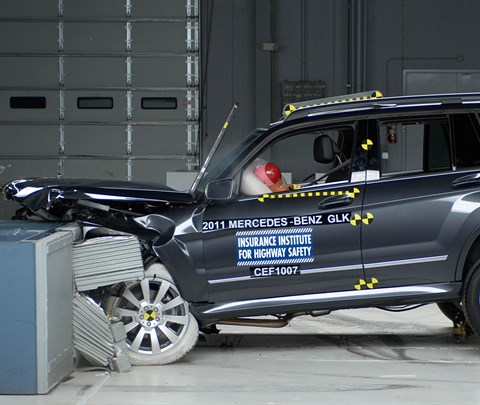
Action shot taken during the frontal offset crash test.
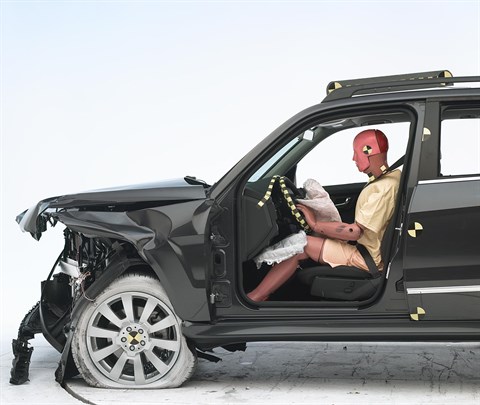
The dummy's position in relation to the steering wheel and instrument panel after the crash test indicates that the driver's survival space was maintained very well.
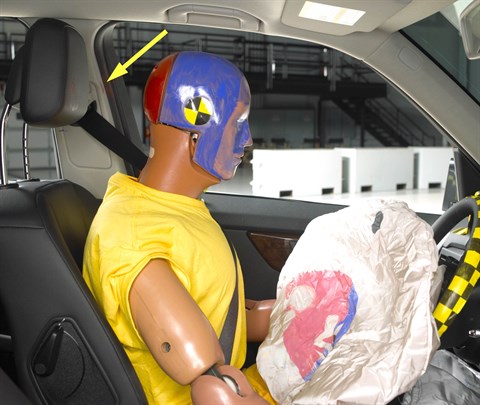
Smeared greasepaint indicates where the dummy's head hit the B-pillar during rebound. Head acceleration from this hit was low.

Although intrusion into the driver's space was minimal and the knee airbag deployed as intended, forces on the lower right leg were just high enough to indicate the possibility of injuries.
Side: original test
Rating applies to 2011-15 models
Tested vehicle: 2011 Mercedes-Benz GLK 350 4-door 4wd with standard front and rear head curtain airbags and standard front seat-mounted torso airbags
The Mercedes-Benz GLK was introduced in the 2010 model year. Beginning with 2011 models, the side torso airbags were modified to improve occupant protection in frontal crashes.
| Evaluation criteria | Rating |
|---|---|
| Overall evaluation | |
| Structure and safety cage | |
| Driver injury measures | |
| Head/neck | |
| Torso | |
| Pelvis/leg | |
| Driver head protection | |
| Rear passenger injury measures | |
| Head/neck | |
| Torso | |
| Pelvis/leg | |
| Rear passenger head protection | |
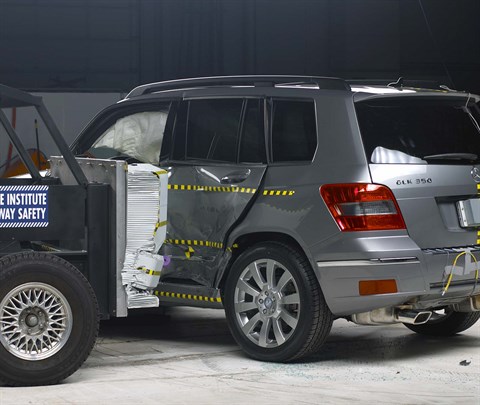
View of the vehicle and barrier just after the crash test.
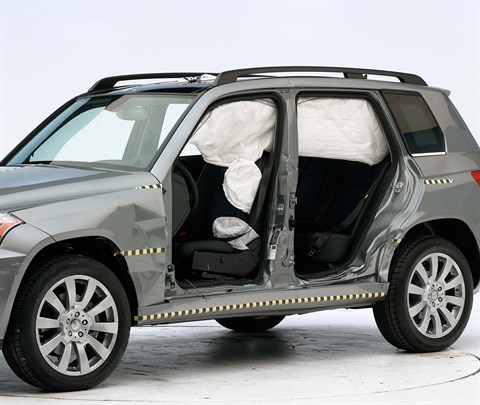
View of the vehicle after the crash with doors removed, showing the side airbags and damage to the occupant compartment.
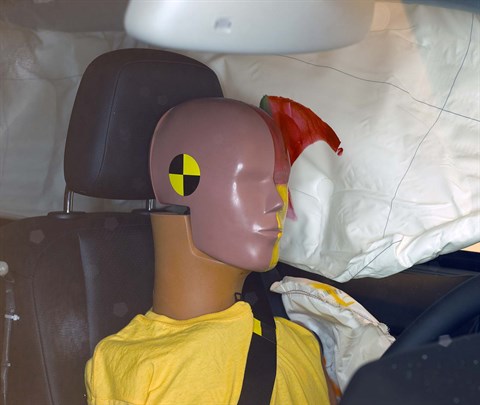
Smeared greasepaint shows where the driver dummy's head was protected from being hit by hard structures by the side airbags.
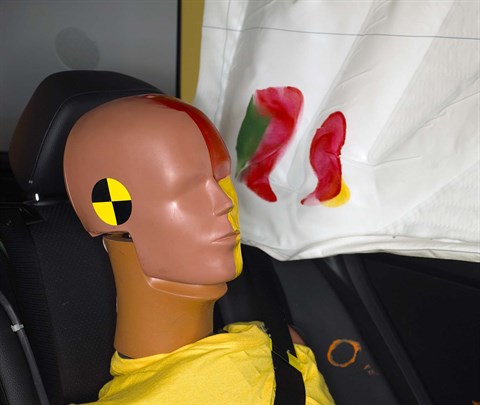
Smeared greasepaint shows where the rear passenger dummy’s head was protected by the side airbag.
Roof strength
Rating applies to 2010-15 models
Tested vehicle: 2011 Mercedes-Benz GLK 350 4-door 4wd
| Overall evaluation | |
|---|---|
| Curb weight | 4,157 lbs |
| Peak force | 26,647 lbs |
| Strength-to-weight ratio | 6.41 |
Head restraints & seats
Seat type: Power leather seats AHR
| Overall evaluation | |
|---|---|
| Dynamic rating | |
| Seat/head restraint geometry |
About the head restraint & seat test
Currently, IIHS tests apply only to front seats.
